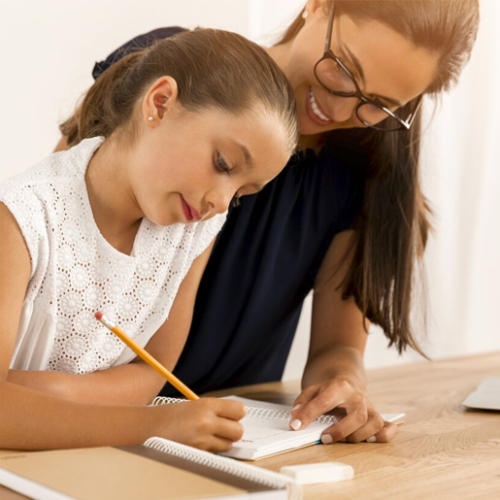The power of saying “What do you think?”

We look at how this simple sentence can open up a whole new world of conversation between you and your child.
Sometimes, the smallest changes in how we speak to our children can have the biggest impact. One stand-out phrase that should be part of every parent’s arsenal is “What do you think?” These four simple words are brilliant for growing kids’ confidence and critical thinking, as well as opening up dialogue between you both. Whether it’s used during problem-solving moments or day-to-day decision-making, this simple question empowers your child to express themselves, think independently, and feel like their thoughts are valued.
Decision-making
When you ask your child, “What do you think?”, you’re inviting them to take part in decisions, big or small. This approach shifts the dynamic from simply following instructions to actively contributing ideas. For instance, instead of saying, “We’re having pasta for dinner,” try asking, “What do you think we should have for dinner tonight, spaghetti or penne?”
Even if their answer isn’t practical, the act of involving them reinforces their role as a valued member of the family. It also helps develop children’s decision-making skills, which form an essential part of growing up. Over time, this practice encourages them to think critically about their preferences and how they approach decisions in other aspects of life.
Critical thinking
Asking “What do you think?” opens the door for exploration and problem-solving. Children learn to assess situations and develop solutions rather than relying solely on external input from you or anyone else. For example, if your child is struggling with a disagreement with a friend, instead of offering a solution right away, try saying, “What do you think is the best way to fix this?”
This approach helps your son or daughter analyse the options and consider outcomes, expanding the critical thinking skills that will serve them well in school, relationships and beyond. When children feel encouraged to brainstorm ideas, they also learn that challenges are opportunities for creativity and growth.
Validation
When you ask your child what they think, you show them that their opinions matter. It’s an opportunity to share their feelings, ideas and creativity without fear of judgement. This can be particularly powerful during emotional moments. For instance, if your little one seems upset after school, instead of saying, “You look sad, what happened?” you might ask, “What do you think would make you feel better right now?”
This slight shift encourages kids to express their emotions and take ownership of their solutions, building up their emotional resilience along the way. It also helps children develop the ability to identify their emotions and communicate them effectively – a skill they will carry all the way into adulthood.
A sense of teamwork
“What do you think?” is an inherently collaborative sentence, showing your child that their input is valued in family matters. Whether you’re planning a weekend activity or tackling a messy room, inviting their thoughts creates a sense of teamwork. For example, instead of directing, “Let’s clean up your toys now,” instead, try asking, “What do you think is the best way to tidy up your toys?”
This collaboration not only motivates children to engage in tasks, but it also strengthens your bond as a family unit. By involving kids in these shared activities, you’re teaching them that working together makes things more fun and effective.
Self-confidence
Every time you ask “What do you think?” you’re reinforcing your child’s ability to contribute and make decisions. Over time, this consistent validation helps build their confidence. They begin to trust their instincts, embrace their ideas and approach challenges with a sense of capability.
Even in moments when they’re unsure, your encouragement will show them that it’s okay not to have all the answers right away and that it’s the process of thinking and sharing that is what truly matters. This helps little ones learn that taking risks, making mistakes and trying again are all part of growth.
A culture of respect
This phrase is also a powerful way to show respect for your child’s individuality. It shifts the conversation from being one-sided to a mutual exchange of ideas. By exemplifying this respectful dialogue, you’re teaching your child how to communicate with others in a thoughtful, considerate way.
The phrase “What do you think?” reminds your child that their voice matters in your family and beyond. It builds their confidence in speaking up and engaging with other people, creating a foundation for healthy communication and collaboration in the future.
A lifelong mindset
Ultimately, “What do you think?” is more than just a question – it’s a mindset that encourages independent thought and the ability to exchange ideas. By consistently incorporating this phrase into your daily interactions, you’ll be nurturing a sense of curiosity and agency in your child that will benefit them for years to come.
So next time you’re faced with a decision, a challenge or even a quiet moment together, try pausing and asking, “What do you think?” You might be surprised by the incredible ideas, insights and conversations it sparks. By embracing this small but impactful change, you’ll be able to support their confidence but also create a stronger, more connected relationship between you both.
Image Credit: ShutterStock











Comments